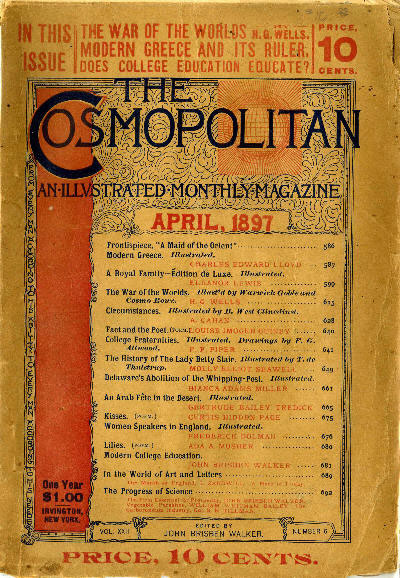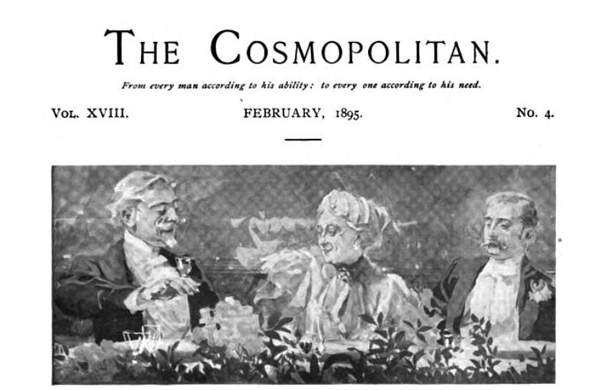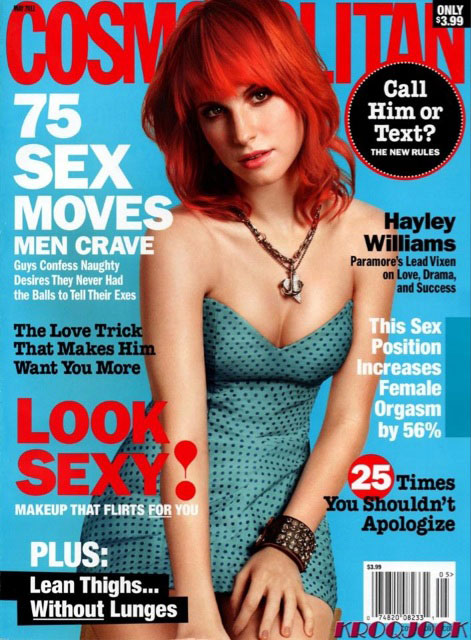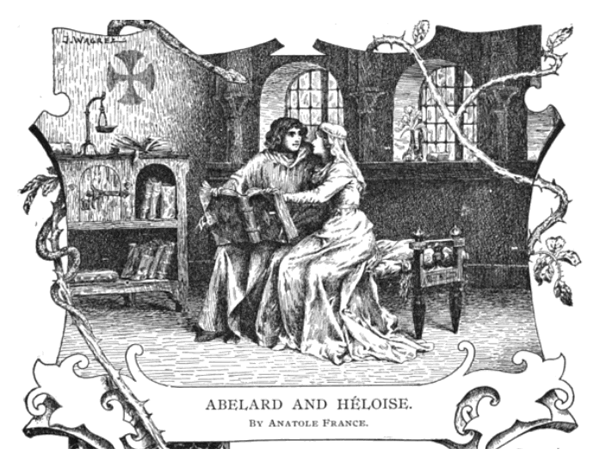Reading Cosmo
Today, a great American magazine. The Honors College at the University of Houston presents this program about the machines that make our civilization run, and the people whose ingenuity created them.
Like my friend John Lienhard, I love reading back issues of Cosmopolitan magazine. John prefers the pictures, but I love the articles, which are amazing. Why, that piece on the Canadian legislature was an eye opener, not to mention the expos' on the "real George Washington." Frank Smith tells us about Irish politics, and Lewis Swift relates new breakthroughs in astronomy. Then there's the poetry, the short stories, and the songs!
I guess I should mention I'm talking about the Cosmopolitan of the 1880s. Yes, it is that old. The Cosmo you see on the newsstands today has a history going back to the "magazine mania" of the 1880s and 90s. America's Gilded Age saw the birth of some of our greatest serial publications: Collier's, National Geographic, The Ladies' Home Journal, Good Housekeeping, McCall's, the original Life magazine, not to mention the now defunct McClure's, once famous for its muckraking journalism.

Before radio and television, these magazines flourished in a nation with a booming economy and a surprisingly high literacy rate. American social mobility put many people into the middle management class, and magazines helped them to get their bearings on a number of topics important to their new status. Politics, world affairs, history, and myriad topics of the domestic sphere filled the pages of these new social compasses. Commercial advertising targeting this class opened a brave new world of products essential to modern life: watches, bicycles, cameras, hand soaps and healing creams, sewing machines and passenger trains. With no other media market to compete with magazines and newspapers, the periodical industry exploded with energy. It beckoned to investors with promises of easy money and to authors with prospects of literary fame.

The Cosmopolitan was founded as a venture by the president of a Rochester company that manufactured office equipment. It was originally a family literary magazine'and it was a financial disaster. Its first two years put the parent company in bankruptcy. Under new management, it transformed itself into a leading literary magazine, featuring major authors like Jack London, Edith Wharton, and, Rudyard Kipling. In 1897, it serialized H. G. Wells' science fiction novel, The War of the Worlds.
William Randolph Hearst bought Cosmopolitan in 1905, and it remains a Hearst publication to this day. It continued to flourish for decades, studded with the work of top-shelf authors like Sinclair Lewis and George Bernard Shaw. But by the 1950s, the new media markets were taking their toll, and the magazine was in trouble.
Cosmopolitan was finally reinvented into the Cosmo we know only in 1965. This was the work of Helen Gurley Brown, whose winning formula of cover cleavage and saucy 'sexpertise' has kept this venerable magazine alive by redefining its audience. But how does one relate the magazine's glorious past to its lurid present? Well, let's speak charitably and say, Cosmopolitan continues its mission to expand the knowledge and skill set of the American middle class.

I'm Richard Armstrong, at the University of Houston, where we're interested in the way inventive minds work.

For Lienhard episodes with Cosmopolitan illustrations, see Episode 1335, Episode 313, Episode 289, and 761.
Sources:
Landers, James. The Improbable First Century of Cosmopolitan Magazine. Columbia, MO: U Missouri P, 2010.
Images:
The 2011 cover of Cosmo is Wikipedia commons.
The remaining images are from digital access to the original volumes.
This episode first aired September 19, 2012.